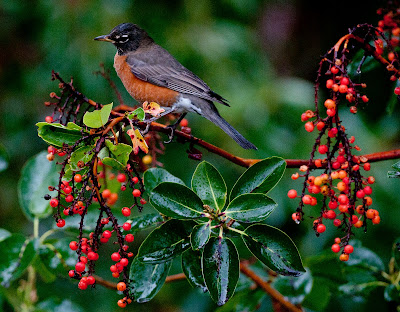As I drove down Rawlin's Road I saw a single bird on a wire which I presumed at a great distance was a shrike. It flushed very early into a field and spent a few seconds hovering, but not quite enough time for me to unholster the camera. When I came back I found the shrike had flown across a field and was now on a side road. I anticipated having the same problem with flushing again. The bird did flush, but when it returned to the wire it did so immediately beside my vehicle! These kinds of things just don't normally happen. I snapped a lot of photos all of which are probably the best shrike photos I have, but the entire time I was lamenting that there wasn't a natural perch within several hundred yards of us. I wondered if we couldn't pay some of these farmers to place a snag or two a few feet into their fields.?
Later on Fir Island near the Jensen Access I found a pair of Common Ravens. I was able to park fairly close to them because they were scavenging the remains of a bird that was in a field. Check out the beak on this bird!
And a little lesson for beginning birders. Notice the diamond-shaped tail on this raven. Crows have a fan-shaped tail with a rounded end and this is one of the best ways to tell these two birds apart when they are flying overhead.
On my way home I noticed an interesting sunset so I stopped my car, retrieved it from the back where I had place it for safe-keeping while shopping, and took this photo of the sunset.





















